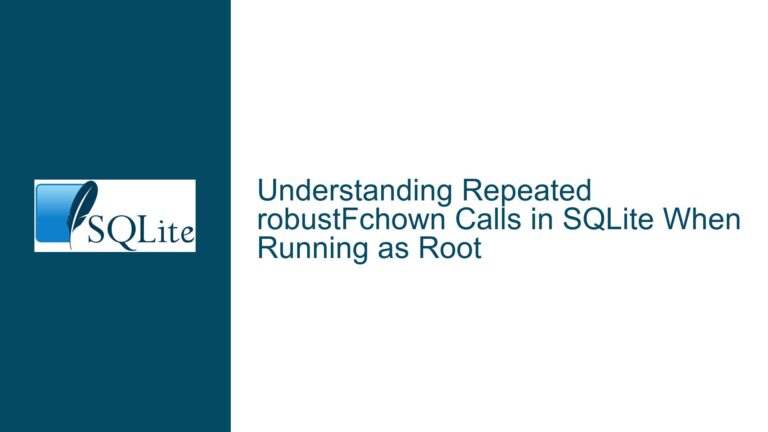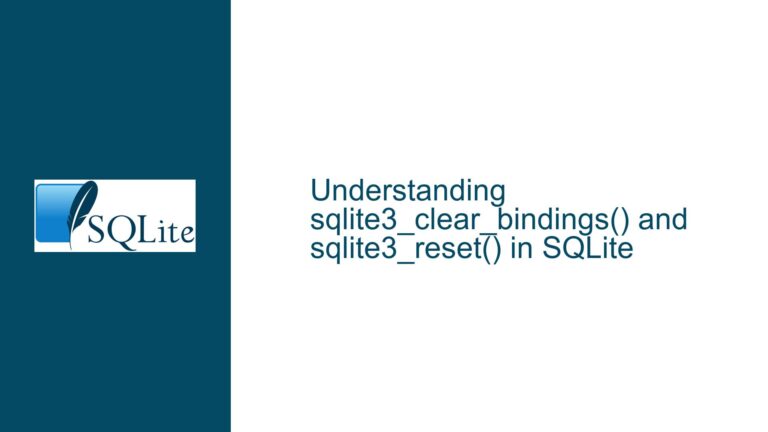Unexpected Data Persistence and Insertion Issues in SQLite Table
Understanding Mismatched Data and Insertion Behavior in sys.abcattbl 1. Infinite Loop in Data Insertion Logic and Transaction Integrity The code provided contains an infinite loop structure (for(;;)) that iterates over the results of a SELECT query fetching table/view names. This loop lacks termination logic for when all rows have been processed. SQLite’s sqlite3_step() function returns…









